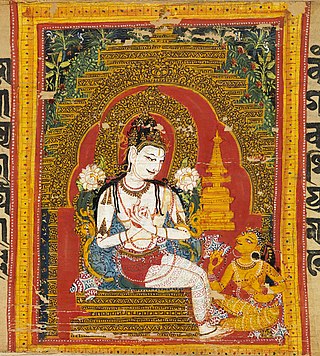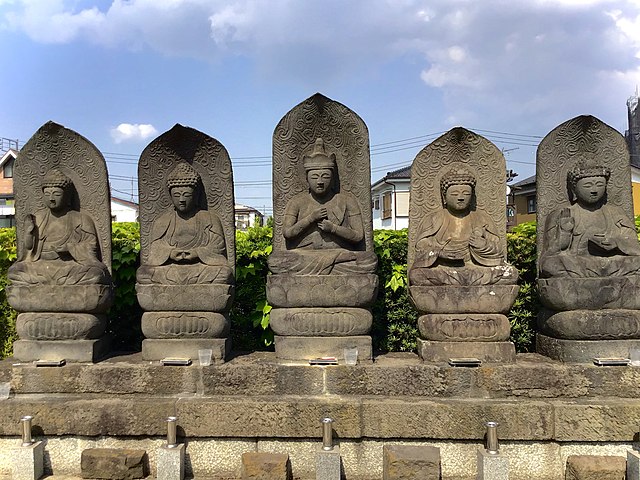
Mahayana
Branch of Buddhism / From Wikipedia, the free encyclopedia
Dear Wikiwand AI, let's keep it short by simply answering these key questions:
Can you list the top facts and stats about Mahayana?
Summarize this article for a 10 year old
Mahāyāna (/ˌmɑːhəˈjɑːnə/ MAH-hə-YAH-nə; Sanskrit: महायान, pronounced [mɐɦaːˈjaːnɐ], lit. 'Great Vehicle') is a term for a broad group of Buddhist traditions, texts, philosophies, and practices developed in ancient India (c. 1st century BCE onwards). It is considered one of the three main existing branches of Buddhism, the others being Theravāda and Vajrayāna.[1] Mahāyāna accepts the main scriptures and teachings of early Buddhism but also recognizes various doctrines and texts that are not accepted by Theravada Buddhism as original. These include the Mahāyāna sūtras and their emphasis on the bodhisattva path and Prajñāpāramitā.[2] Vajrayāna or Mantra traditions are a subset of Mahāyāna which makes use of numerous tantric methods Vajrayānists consider to help achieve Buddhahood.[1]


Mahāyāna also refers to the path of the bodhisattva striving to become a fully awakened Buddha for the benefit of all sentient beings, and is thus also called the "Bodhisattva Vehicle" (Bodhisattvayāna).[3][note 1] Mahāyāna Buddhism generally sees the goal of becoming a Buddha through the bodhisattva path as being available to all and sees the state of the arhat as incomplete.[4] Mahāyāna also includes numerous Buddhas and bodhisattvas that are not found in Theravada (such as Amitābha and Vairocana).[5] Mahāyāna Buddhist philosophy also promotes unique theories, such as the Madhyamaka theory of emptiness (śūnyatā), the Vijñānavāda ("the doctrine of consciousness" also called "mind-only"), and the Buddha-nature teaching.
While initially a small movement in India, Mahāyāna eventually grew to become an influential force in Indian Buddhism.[6] Large scholastic centers associated with Mahāyāna such as Nalanda and Vikramashila thrived between the 7th and 12th centuries.[6] In the course of its history, Mahāyāna Buddhism spread from South Asia to East Asia, Southeast Asia and the Himalayan regions. Various Mahāyāna traditions are the predominant forms of Buddhism found in China, Korea, Japan, Taiwan, Singapore, Vietnam, Philippines, Indonesia and Malaysia.[7] Since Vajrayāna is a tantric form of Mahāyāna, Mahāyāna Buddhism is also dominant in Tibet, Mongolia, Bhutan, and other Himalayan regions. It has also been traditionally present elsewhere in Asia as a minority among Buddhist communities in Nepal, Malaysia, Indonesia and regions with Asian diaspora communities.
As of 2010, the Mahāyāna tradition was the largest major tradition of Buddhism, with 53% of Buddhists belonging to East Asian Mahāyāna and 6% to Vajrayāna, compared to 36% to Theravada.[8]